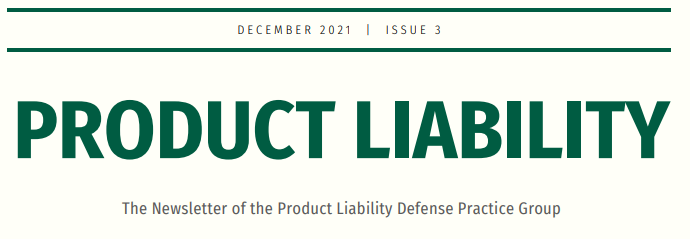
Should We Cap Contingency Fees?
By Jack C. Henning, Esq.
Dillingham & Murphy, LLP
There is another effort in California to limit contingency fees and a companion effort to require pre-suit settlement discussions. On October 3, 2021, the Civil Justice Association of California (CJAC) submitted two statewide ballot initiative proposals to the California Attorney General for the November 2022 ballot. The Attorney General now will issue titles and summaries of the initiatives. This will allow the CJAC to begin the process of trying to collect the necessary voter signatures by April 2022. The number of signatures must be equal to at least 5% of the total votes cast for the office of California Governor at the last gubernatorial election, which means CJAC will need approximately 686,000 signatures.
CJAC is an association “dedicated solely to improving California’s civil liability system, in the legislature, the regulatory area, and the courts.” It is a non-profit group that represents corporate/business interests. The CJAC website (https://www.cjac.org) has interesting information regarding not only the two ballot initiative proposals, but also regarding reforms needed concerning ADA, asbestos, and Lemon Law litigation. The two proposed ballot initiatives are the “Pre-Lawsuit Notice and Opportunity to Settle Act” and the “Consumer Legal Fee Protection Act.”
The Pre-Lawsuit Notice and Opportunity to Settle Act states that any claimant seeking a monetary remedy, monetary penalty, or corrective remedy from another person shall provide that person with notice and a reasonable opportunity to resolve the matter prior to commencing a civil action. The notice shall be in writing, state the entire amount of monetary payment requested, and state the time period for which the offer to settle shall remain open, which shall not be less than 60 calendar days. The statue of limitations shall be tolled during the notice period. The Consumer Legal Fee Protection Act provides that an attorney shall not contract for or collect a contingency fee in excess of 20% of the amount recovered for the claimant. “Amount recovered” is defined as the total sum of any monetary remedy or monetary penalty paid to a claimant, exclusive of the costs incurred and paid on the claimant’s behalf, whether paid through settlement, arbitration, or judgment. To view the ballot measures submitted by CJAC, visit www.cjac.org/ballot.
The CJAC claims the current legal system puts the interests of trial lawyers ahead of injured consumers. It wants to ensure injured consumers receive more of the compensation they deserve and that they receive it sooner. The CJAC website provides that “[u]nder the current system, some lawyers are incentivized to file unnecessary lawsuits and delay resolution so they can run up their fees with no added benefit to their clients. This is why there are often cases where the attorney fee award is more than the injured client’s recovery.” Opponents claim contingency fees are often the only way for individuals to pursue claims against large corporations that have resources to fight lawsuits and seek to make the cases as expensive as possible.
A focus of the CJAC ballot campaign will be suspended plaintiff’s attorney Thomas Girardi of the Los Angeles firm of Girardi & Keese. You might have heard of the firm because of its association with Erin Brockovich in a lawsuit against a California utility concerning the claims of Hinkley, California residents regarding incidents of cancer and other diseases allegedly associated with contaminated water leaked from a gas pumping station. However, others of you might be more familiar with Mr. Girardi’s wife, Erika Jayne, who is a star of the show Real Housewives of Beverly Hills. Girardi & Keese is in bankruptcy, and a recent filing by the bankruptcy trustee discloses that the firm owes over $101 million to creditors, but only has assets of $4 million. It appears that most of the money is owed to former clients Girardi & Keese represented in bodily injury actions.
This is not the first effort in California to limit contingency fees. In 1988 voters defeated a ballot proposition that attempted to limit attorney fees in tort cases on a sliding scale from 25% for lawsuits under $50,000 to no more than 10% for recoveries over $100,000. In March 1996 voters defeated another ballot proposition that limited the amount attorneys could have collected to 15% of a settlement offer, with additional fees allowed only on amounts higher than that offer. It is not realistic to expect these new ballot initiative proposals to pass in California, but we will keep you informed as the ballot process progresses.

